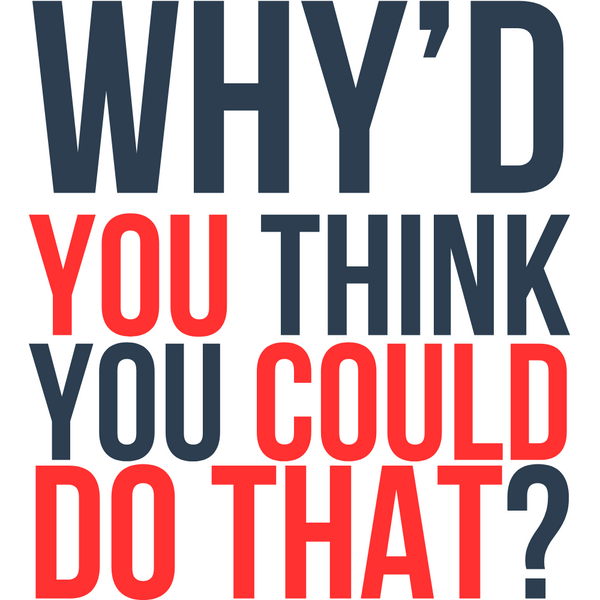
56X Your Decision Making: How Culture Branding Accelerates Your Business with Nader Safinya
Share
Built to Sell | Built to Buy — Long-form Feature
Culture Branding: How to Build a Business That Moves 56× Faster — Nader Safinya on Black Ribbit & Human-Centred Design
With Sam Penny · Published 15 October 2025 · 18–22 min read
What if your company could make decisions 56 times faster—without chaos, burnout, or eroding trust? In this in-depth conversation, Nader Safinya—founder of Black Ribbit and creator of the Culture Branding framework—shows how aligning your internal culture and external brand creates the clarity, speed, and consistency buyers and employees can feel.
Across two decades and multiple continents, Nader has helped organisations replace “posters on a wall” with living systems that scale. We dive into his upbringing across cultures, the serendipity behind the Black Ribbit name, and the development of the Culture Brand Filter—an AI-backed tool leaders use to turn values into crisp, confident decisions.
- From Party Rooms to Boardrooms: An Upbringing in Human Dynamics
- Black Ribbit: Name, Meaning & the Shift from Design to Systems
- Defining Culture Branding: Aligning the Inside with the Outside
- The Culture Brand Filter: Values-Based Decisions at Speed
- Can You Measure “56× Faster”? Yes—Here’s How
- Why Companies Hesitate (and How to Overcome the Stall)
- AI, Humanity & the Next Decade of Work
- Three Practical Steps to Start This Week
- Listen & Subscribe
From Party Rooms to Boardrooms: An Upbringing in Human Dynamics
Before founding Black Ribbit, Nader lived across the US, Indonesia, the UAE, France, California, Munich, New York, and Texas. That constant movement gave him a front-row seat to the ways people connect—and protect—across cultures. He describes himself as an introvert and careful observer, someone who noticed how small behaviours reliably triggered specific responses in a room.
The defining classroom, he says, was his mother’s home. She hosted gatherings where everyone was treated the same—housekeepers and C-suite leaders alike. The result was an atmosphere of safety, trust, and lightness: titles fell away, people relaxed, and conversations flowed. That consistency, repeated week after week, left a mark.
“Consistent behaviour elicits consistent responses. When people are treated the same way wherever they meet you, they tell the same story about you.”
It’s a deceptively simple lesson that would later become the core of Culture Branding: the belief that values only create value when they’re experienced consistently by customers and employees.
Black Ribbit: Name, Meaning & the Shift from Design to Systems
Black Ribbit began with a misread tattoo parlour sign in Munich—“Black Rabbit” became “Black Ribbit”—which sent Nader down a rabbit hole of frog symbolism. Across cultures, frogs indicate empathy, transformation, guidance, and teaching. That fit the man and the mission. He named the frog in the logo “Kismet”—Persian for fate.
Career-wise, the shift was equally serendipitous. Starting as a graphic designer, he rose to creative director and found himself connecting dots between marketing, product, merchandising, and communications. He later completed a Master’s in Design Management, grounding his instincts in design thinking—a systematic, human-centred problem-solving model. The lens moved from assets to systems, from campaigns to capability.
Defining Culture Branding: Aligning the Inside with the Outside
Traditional branding obsesses over the customer, while HR and change programs focus on the employee. These silos often never meet. Culture Branding closes the loop by designing the customer brand and the employer brand at the same time, with the same three non-negotiable values at the centre.
When those values flow into every interaction—from interview emails to invoicing, onboarding to off-boarding—the organisation becomes predictable in the best sense. Trust is built. Decisions are faster. Team energy stops leaking into endless debates, and customers feel the difference.
“If brand is the story people tell about you, culture is the behaviour that makes that story true.”
How the values are found (and not invented)
Culture Branding isn’t a whiteboard word-smith. It’s discovered through interviews, observational studies, and workshops that include the whole system—from the CEO to the door greeter, plus partners and customers. Leaders describe who they think they are; customers describe how they actually experience them. The overlap reveals the fundamentals.
From there, Nader insists on landing three non-negotiables—think of a three-legged stool. If any leg is missing in an experience, the stool tips. That constraint sounds strict; in practice, it liberates decision-making because teams always know the “why”.
The Culture Brand Filter: Values-Based Decisions at Speed
Out of the strategy comes a plain-English operating tool—the Culture Brand Statement—and an AI-assisted Culture Brand Filter that leaders can use on decisions big and small. Pens for the office? Hiring and firing policy? Product roadmap? M&A approach? Run it through the filter.
The statement is elegant by design: “We do everything we do because we value X, Y, Z and we want people to experience A, B, C.” At Black Ribbit, those values are reliability, compassion, and deliberate action, leading to an intended experience Nader calls “compassionate design”.
“The Filter removes ego and subjectivity. First you answer ‘should we?’ against your values. Only then do you address ‘how, when, and how much.’”
Teams report solving problems in minutes that had languished for months. The first dividend is time. The second is confidence. The third is momentum as decisions cascade into coordinated action.
Where AI fits (and what it doesn’t replace)
Once your narrative, values, and messaging guidelines are defined, AI becomes a force multiplier: generating options, surfacing risks, and pressure-testing tactics against the Culture Brand Statement. It doesn’t define your values; it operationalises them so people can focus on the judgement calls humans do best.
Can You Measure “56× Faster”? Yes—Here’s How
“56× faster” is an average drawn from real client comparisons: how long a decision had been stuck before the filter, versus time to resolution after applying it. Twelve months to twelve minutes isn’t exaggerated—it’s reported. Three months to five minutes shows up too. Measuring is necessarily retroactive; once the system is installed, you no longer waste months debating should-we/shouldn’t-we, so you use prior deliberations as the baseline.
Beyond speed: the hard and soft ROI
- Customer loyalty: Consistent experiences compound trust.
- Retention: People stay where the inside matches the promise outside.
- Hiring costs: Clear identity attracts self-selected talent.
- Clarity: Less rework, fewer meetings, faster execution.
Nader is candid that hard ROI (retention savings, hiring efficiency, loyalty metrics) compounds over 12–18 months. The soft ROI—alignment, optimism, psychological safety—often lands day one.
Why Companies Hesitate (and How to Overcome the Stall)
If the pay-offs are compelling, why do organisations delay? In Nader’s experience, three themes show up:
1. Decision paralysis at the top
Partnership models and consensus cultures can loop endlessly. Ironically, the stall is the very problem the Filter resolves. The move: run the decision to install Culture Branding through the Filter itself—does it honour who you say you are and create the experience you promise?
2. “What do we get?” fixation
Leaders—especially technical and financial—want tangibles. Nader now shows deliverables upfront: the narrative, values, messaging guidelines, KPI dashboard, and installation plan. The ask is commitment to install, not just purchase a strategy deck.
3. Burn scars from previous programs
Plenty of organisations have paid for brand or culture work that never made it into daily operations. The fix is governance: owners, rituals, cadences, and a first wave of use cases that prove momentum quickly while the longer-arc ROI accrues.
“Don’t buy a beautiful box and leave the software on the desk. Installation is the work.”
AI, Humanity & the Next Decade of Work
AI isn’t culture; people are. But tools that digest information, simulate options, and automate grunt work can give humans back the one resource that grows everything else: time. Nader’s view is pragmatic and urgent: use AI to reduce busywork so people can do more of the deeply human tasks—meaningful collaboration, judgement, creativity, care.
His warning is equally clear. If we outsource our judgement wholesale, we’ll teach machines our worst habits and invite them to “protect us from ourselves.” The antidote is a values-anchored operating system that shows tech how to serve human ends.
What leaders can implement now
- Map your stack: Ensure your behavioural, HR, and customer data can talk securely.
- Start low-risk pilots: Use the Filter for content planning, onboarding messaging, or service scripts.
- Train for judgement: Teach bias awareness and critical thinking so AI speeds quality, not just quantity.
Three Practical Steps to Start This Week
- Mirror test: Look yourself in the eyes and ask, “Would you want to work for you?” Write the real answer. That honesty sets the tone for the whole company.
- Ask the system: In a single session, ask your team and a few customers, “Why would you want to work here or buy from us?” Synthesize the overlap. That’s your starting truth.
- Audit the receipts: Read employee reviews, customer testimonials, and support tickets from the last 12 months. Highlight what’s consistently praised and consistently painful. Turn each into a decision rule.
When you’re ready to formalise, land your three non-negotiable values and write a one-line Culture Brand Statement. Use it to evaluate your next five decisions.
FAQs: Culture Branding in Practice
Is this just a new name for brand strategy?
No. Traditional brand strategy tends to face outward. Culture Branding designs two brands—customer and employer—on one spine of values, then installs an operating tool (the Filter) so decisions match the story everywhere.
Will this slow us down?
Only while you clarify the values and write the Filter. That upfront work removes the biggest drag: confusion about “why”. Once the why is constant, the how accelerates.
What if our product changes?
Values don’t depend on product. If the market shifts, the Filter still works because it governs how you make decisions, not which SKU you sell.
How do we avoid it becoming a poster?
Installation. Assign owners, set cadences, and put the Filter on the table for every hiring plan, campaign, customer script, and governance change for 90 days. The habit sticks because it saves time.
Pull Quotes
“Consistent behaviour elicits consistent responses—that’s how brand trust is built.”
“If your values change with your product, you don’t have values—you have preferences.”
“Time is the only thing holding us back from becoming better humans. The Filter gives it back.”
Key Takeaways
- Brand and culture are one system when values show up everywhere, inside and out.
- Three non-negotiable values become a decision engine that removes ego and speeds action.
- Measure speed gains retroactively: compare pre-filter deliberation times to post-filter resolutions.
- AI should accelerate execution, not replace judgement; keep humans on the “why”.
- Installation beats inspiration—governance and rituals turn values into value.
Links & Resources
- Black Ribbit — Culture Branding & Frog Talk: blackribbit.com
- Connect with Nader on LinkedIn: linkedin.com/in/nadersafinya
- Watch this episode on YouTube: youtube.com
- Listen to Built to Sell | Built to Buy: Apple Podcasts · Spotify
Listen, Watch & Subscribe
Prefer the episode in your ears? Find it wherever you listen:
Apple Podcasts · Spotify · YouTube
- Share it with a founder or leader who’s scaling fast.
- Run your next three team decisions through a one-line Culture Brand Statement.
- Start your values installation sprint: owners, cadences, and five pilot use cases.
— Sam Penny
